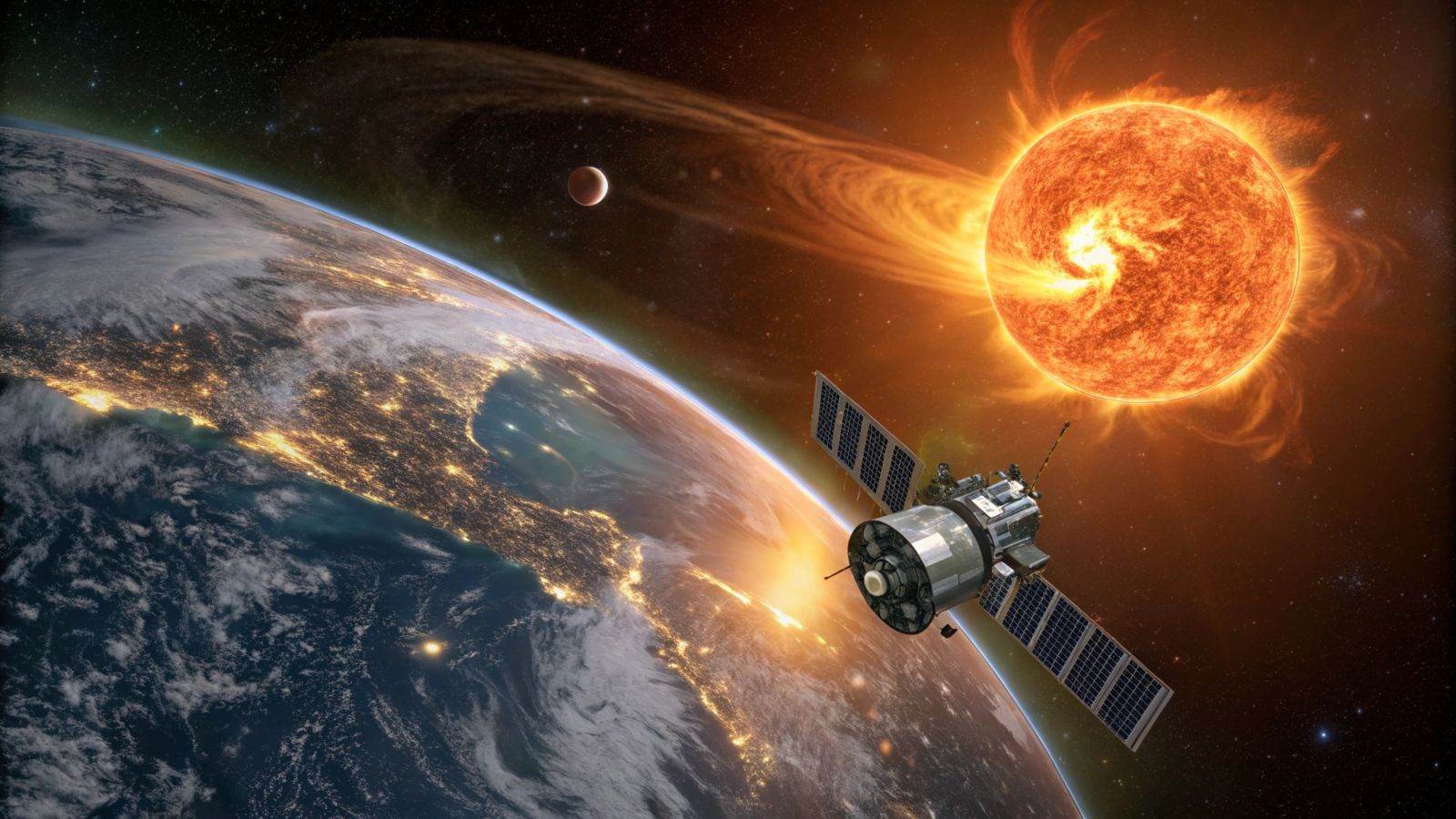The Sun soon entering a "battle zone": a period of extreme turbulence ☀️
Published by Cédric,
Article author: Cédric DEPOND
Source: Linker Space
Other Languages: FR, DE, ES, PT
Article author: Cédric DEPOND
Source: Linker Space
Other Languages: FR, DE, ES, PT
Follow us on Google News (click on ☆)

The solar cycle, which lasts 11 years, alternates between periods of low and high magnetic activity. Currently, the Sun is approaching its solar maximum in 2025. This peak activity, already evident, is characterized by an increase in solar flares and geomagnetic storms.
Following this maximum, a critical stage awaits our star: the "battle zone." This term, popularized by experts at Lynker Space, refers to a period when two solar magnetic cycles compete, triggering significant disturbances. This phase is marked by the appearance of coronal holes—sources of powerful solar winds.
These winds, made up of charged particles, travel at dizzying speeds of 435 miles per second (700 km/s). When they reach Earth, they can disrupt orbiting satellites, alter communications, and even confuse GPS networks. These phenomena, already under watch, are expected to intensify in 2025.
This turbulence will also be amplified by what is known as the "Hale cycle," corresponding to the end of a 22-year period. At the end of this cycle, solar magnetic bands collide, creating tension that further encourages the formation of coronal holes.
For astronomers, this "battle zone" is a true research frontier. It is difficult to predict precisely, but its impacts are very real. To date, missions like the Solar Dynamics Observatory are scrutinizing these coronal holes, seeking to anticipate the most violent solar winds.
Additionally, this phase might offer a unique celestial show: auroras visible at unusual latitudes, lighting up the skies with colorful displays. A rare opportunity for natural phenomenon enthusiasts.
While the consequences on Earth remain limited for the general population, the main concern lies in space infrastructure. Satellite operators are already preparing to face these technological challenges and mitigate the risks of geomagnetic anomalies.
The Sun, despite its distance, continues to exert a major influence on our planet. Observing and understanding its cycles remain essential to anticipating its whims—sometimes unpredictable but always fascinating.